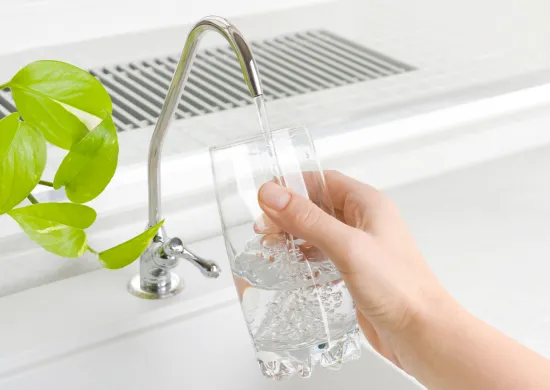

Whether it’s in a warehouse, on the road, in an office or even at home, we spend over 30% of our day working. From having conference calls, meeting deadlines and doing the everyday tasks, we are all busy and our day sometimes just gets away from us – including doing the things that are important for our own health.
With our bodies made up of up to 60% of water, we are constantly craving more water as we also continue to lose water throughout our day, due to our environment, physical activity, our genetic makeup and even through the vapor in the breath we exhale.
Especially now, in the summer heat, it’s crucial that we remember to drink the necessary water on a daily basis before our body runs on empty. But what happens when we don’t take in the water we should? Our bodies become unbalanced and become dehydrated.
According to WebMD, “dehydration is a condition that occurs when the loss of body fluids, mostly water, exceeds the amount that is taken in.” Although there are many things that can cause the body to become dehydrated, one of the main reasons is that the body is not getting enough drinking water to refuel the water it’s losing.
Here at Culligan, dehydration is not something we take lightly, so we have prepared some dehydration signs you should keep an eye on.
Common symptoms of moderate dehydration
Bad Breath – as stated by Everyday Health, “Saliva has antibacterial properties in it,” but once the body becomes dehydrated, it won’t allow the body to produce the saliva needed to fight bad breath.
Low Energy – according to Fitness Magazine, “dehydration causes your body to conserve energy by decreasing blood circulation,” which then prevents your muscles of getting oxygen and causes them (and you) to become fatigued.
Thirst – having the feeling of being thirsty is your body’s reminder that it needs more fluids. But don’t wait until you’re thirsty to replenish your body. Although it serves as a reminder, continuing to hydrate your body throughout the day will keep you from not only feeling thirsty but also avoiding these other signs of dehydration.
Headache – the brain is surrounded by pockets of fluids that keep it safe within your body. But when those pockets of fluid become depleted, the brain can push on parts of the skull, which in turn can cause headaches.
Decreased fluid output – whether you seem to have the inability to sweat, lack of tears when crying or haven’t been to the restroom all day – your body’s inability to put out fluid is also a sign of dehydration.
Be aware of what your body needs
As we said before, we become so busy within our daily lifestyles and our busy work days, that it’s possible for us to not realize that we aren’t properly hydrated, so make sure to stay aware of what your body needs. Two quick tests you can do are:
Check the colour of your urine
Although a dark colour of urine can be due to dehydration (or some other medical issues), having urine that is too light in colour isn’t always a good thing either. Make sure to check out Cleveland Clinic’s helpful infographic, showing what the colour of your urine says about your health and what colour shows that you’re hydrated.
Test your skin
As recommended by Livestrong.com pinch the skin on the back of your hand, between your wrist and your fingers, and lift your skin up. Now, let go. If the skin falls back down at a slow pace, there’s a chance that your body is in need of some more water.
If you continue to find yourself dehydrated throughout your day, make sure to carry a reusable water bottle with you – especially while you’re at work. Fill up and continue drinking water throughout your day, not just when you’re thirsty. And keep in mind that the more you sweat during your day (due to your environment or physical activity), the more water you should drink to make up for what you’ve lost.



